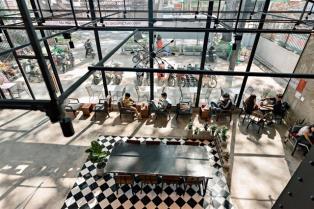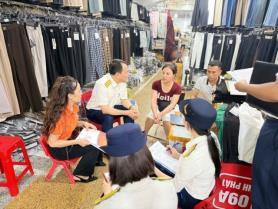Southern Kien Giang Province authorities are impatient with the long delay in building a huge thermal power plant in Kien Luong District.
by Le Hung Vong
 |
| O Mon Thermal Power Plant in southern province of Ca Mau. Photo nangluongvietnam |
(Biz Hub) Southern Kien Giang Province authorities are impatient with the long delay in building a huge thermal power plant in Kien Luong District.
Recently the Cuu Long (Mekong) Delta province's administration ordered the planning and investment and industry and trade departments to work with the UK's Graham Bell and Associates Ltd to look for new investors for the US$6.7 billion Kien Luong thermal power project.
The deadline for starting work – by current licensee Tan Tao Investment and Industry Corporation (ITACO) – is June end, and the company seems unlikely to do so.
In mid-April, after knowing the status of the project, GBA wrote to the Kien Giang People's Committee, asking for an opportunity to study it and find new investors.
The committee then ordered the departments to meet with GBA representatives on May 20.
The three-stage project includes a 4,400 – 5,200 MW thermal power plant and the Nam Du Deep Sea Port on An Son Island, 60km from the plant.
The proposed $800 million port, which can berth ships of 150,000DWT and handle 50 million tonnes of coal for the proposed plant and others in the south, has also been a non-starter.
At a meeting in late April Minister of Industry and Trade Vu Huy Hoang told Kien Giang authorities to seek approval from the Government to revoke the licence issued to ITACO and find a new investor.
Hoang was quoted as saying that investors from Australia, France, India, Russia, and South Korea with the required financial and technological capability have shown interest in the project.
In late April deputy chairman of Kien Giang, Pham Vu Hong, said the project was likely to be halted if ITACO fails to raise funds for the power plant by June 30.
Despite being licensed five years ago, the project has barely made headway.
The first phase of the project was scheduled to go on stream at the end of this year.
ITACO, a subsidiary of Tan Tao Group, said land acquisition for Kien Luong 1 was completed over 18 months ago, but the project has made no progress due to lack of funds.
ITACO's general director, Thai Van Men, said the bank has agreed to provide credit for the project, but requires a Government Guarantee and Undertaking which has not been forthcoming so far.
Le Khac Ghi, director of the provincial Department of Planning and Investment, said the investor of a project must bring in at least 20 per cent of the cost to be eligible for a loan.
"Regardless of loans and credit, the investor must bring in at least 20 per cent of the cost of the project. Therefore, Tan Tao must provide at least $1.4 billion."
The stalled project presents a major obstacle, hindering the country's economic and energy development and making it difficult for the province to attract other investors with deeper pockets, he said.
Investment in Cambodia up
 |
| Viet Nam's investment in Cambodia has increased remarkably. |
Viet Nam's investment in Cambodia has increased significantly in the last three years, but a mechanism to encourage and oversee investments in prioritised sectors is needed, according to diplomatic sources.
Tan Nguyen Tien, head of the economic section at the Vietnamese embassy in Phnom Penh, said Viet Nam's investments in Cambodia quadrupled from $566 million in 41 projects in 2010 to $2.5 billion last year.
Viet Nam has in fact become one of the top five investors in the neighbouring country.
Cambodia is the second largest destination out of 50 countries and territories for Vietnamese investment.
Viet Nam's investment contributes to 5 per cent of Cambodia's GDP and has created over 30,000 jobs.
Tien said Vietnam Airlines' direct services between the two countries and Viettel's telecom service in Cambodia have helped boost Vietnamese investment in that country.
Besides, the increasing Vietnamese investment in Cambodia is drawing a growing number of Vietnamese travellers. Vietnamese are, in fact, the biggest group of visitors to the country.
Tien said Vietnamese investments in Cambodia included many projects in forestry – agriculture, energy, banking, aviation and telecom sectors.
There are also four projects in the energy sector with a total investment of nearly $800 million, five in finance-banking with $250 million, one telecom project capitalised at $150 million, and a civil aviation project worth $100 million.
Vietnamese FDI in Cambodia is expected to top $4 billion by 2015, and trade between the countries to increase from $3 billion last year to $5 billion by 2015.
The incremental investment will create an estimated 80,000 jobs and contribute $300 million to the country's coffers annually, Tien said.
"The geographical proximity between the two countries will help bring more Vietnamese investors to Cambodia to explore business and investment opportunities," Tien was quoted by the Viet Nam Economic Times as saying.
But a better co-operation mechanism is needed to oversee economic sectors that require FDI and make Viet Nam's investment a cornerstone for co-operation between the two countries, he said
Call to produce less rice
 |
| Viet Nam Food Association suggested to reduce rice cultivating area. Photo monre.gov.vn |
With the global supply of rice exceeding demand and leading to lower prices, the Viet Nam Food Association has asked the Ministry of Agriculture and Rural Development to consider reducing the area under rice to reduce the risk faced by farmers.
The VFA is concerned about finding markets for Vietnamese rice at a time when the global market is stagnant.
Pham Van Du, deputy head of the Cultivation Department, said it takes time to reduce the area under rice.
Besides, the VFA has to specify the varieties of rice and volumes that would be exported and their annual output, he said.
It also has to spell out the volume of rice to be decreased or increased so that the department can make comprehensive areawise plans.
When the area under rice cultivation is reduced, a number of farmers will switch to maize and soybean, which cost Viet Nam some $3.7 billion per year in imports.
Du said growing maize and soybean is not difficult for farmers, but selling them is if the animal husbandry sector seeks to purchase imported maize and soybeans instead of local produce.
"Government agencies must be fully aware of how much and where a farm produce will be sold before encouraging farmers to grow that crop," he said.
Prof Vo Tong Xuan, director of Tan Tao University, said the Government should take comprehensive measures to create markets for agricultural produce.
He quoted the example of the Malaysian Government which "has taken measures to make palm oil one of the country's major export products." — VNS
- Tags
- kien giang
- tan tao
- rice
- vietnam





